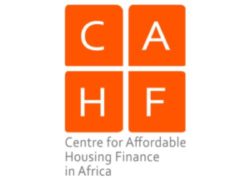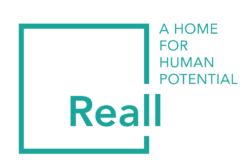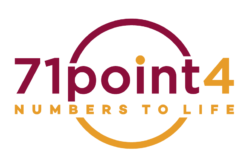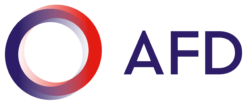Cote d’Ivoire - Market Shaping Indicators
Country Overview
Cote d’Ivoire’s economic growth has slowed but remained high at 6.86 percent in 2019, significantly above the West African Monetary Union (WAMU) average of 6.6 percent. However an economic slowdown in 2020 is likely, linked to the COVID-19 pandemic and the possibly of presidential elections that could weaken private sector arrangements. Growth could fall to 2.7 percent. Despite this, the government continues to implement its economic and financial programme, notably through reforms outlined in the National Development Plan 2016-2020, including a social and economic housing construction programmme.
However housing is becoming increasingly difficult to access in the economic capital. In 2015, housing-related spending accounted for about one-third of Abidjan household spending (compared to 14 percent nationally). Only a small proportion of Abidjan households are able to acquire housing. In Cote d’Ivoire, the housing supply is mainly made up of informal houses, built by the households themselves. Common yard housing and band houses are the most common forms of habitat in Abidjan. According to the World Bank, 56 percent of the urban population lives in slums.
To meet housing needs, the government has been involved for nearly a decade in the mass production of affordable homes (economic and social). To date, of the 150 000 economic and social housing units to be built by 2020, 15,000 have been delivered or are being delivered mainly on the outskirts of Abidjan.
Housing needs remain extremely high and are far from being met. The economic and social impact of the COVID-19 pandemic and the presidential elections at the end of October 2020 make the business climate relatively uncertain. However, regulatory reforms initiated at the beginning of the year support the development of the housing sector, providing an improved framework for supply development and private investment.
Data Availability
While some of the data is made available by major international organisations and the National Institute of Statistics (created in 1996), the challenge of accessing recent housing finance data remains a major one in Cote d’Ivoire. The Central Bank provides a lot of short-term data on financial dynamics but little on the housing sector (especially mortgages). Knowledge of supply and demand remains approximate and explains, in part, the difficulties encountered in housing production.
At different levels, public authorities have tackled the problem: the government has set up an open data platform¹; with the support of the African Bank of Development, the MCLU has committed to producing a 2012-2017 Statistical Yearbook, with the support of the European Union and the geo-referencing of the recently produced housing supply. But these relevant initiatives require regular updating. The WAMU, with the support of the World Bank, is supporting two West African universities to establish a Centre of Excellence for Housing, which aims to set up data collection and provision of data for all stakeholders in the eight WAMU states.
Text on this page is based on the Cote d’Ivoire Country Profile, drawn from Centre for Affordable Housing Finance (2020). Housing Finance in Africa Yearbook: 11th Edition 2020², with additional content from CAHF and Reall.
Key Indicators
1. Land & Infrastructure
% of urban bottom 40 households without access to basic sanitation services
| Country | Year | Data Source | Value |
|---|---|---|---|
| Cote d'Ivoire | 2012 | DHS | 96.5% |
| Ghana | 2014 | DHS | 93.15% |
| Kenya | 2014 | DHS | 88.25% |
| Morocco | 2004 | DHS | 52.05% |
| Mozambique | 2011 | DHS | 95.6% |
| Nigeria | 2018 | DHS | 83.1% |
| Tanzania | 2017 | DHS | 37% |
| Uganda | 2016 | DHS | 94.5% |
| Rwanda | 2016 | National Institute of Statistics Rwanda (NISR) | 13.13% |
| Pakistan | 2018 | The DHS Program | 2.75% |
| India | 2018 | NSSO 76th Round | 0.2% |
2. Construction & Investment
% of urban population living in slums, informal settlements, or inadequate dwellings
| Country | Year | Data Source | Value |
|---|---|---|---|
| Cote d'Ivoire | N/A | ||
| Ghana | N/A | ||
| Kenya | N/A | ||
| Morocco | N/A | ||
| Mozambique | N/A | ||
| Nigeria | N/A | ||
| Tanzania | N/A | ||
| Uganda | N/A | ||
| Rwanda | 2018 | World Bank | 42.1% |
| Pakistan | N/A | ||
| India | 2018 | NSSO 76th Round | 35% |
3. Sales & Rental
Price of the cheapest, newly built dwelling by a formal developer or contractor
| Country | Year | Data Source | Value |
|---|---|---|---|
| Cote d'Ivoire | 2018 | Site d'annonce et promotion dans l'immobilier en Côte d'Ivoire | 15,500,000 CFA$27,087.48 |
| Ghana | 2019 | Damax Construction Co. Ltd | 108,704 GH₵$19,621.66 |
| Kenya | 2019 | Tsavo Real Estate | 4,000,000 Ksh$37,037.04 |
| Morocco | 2019 | Various real estate websites | 250,000 DH$27,027.03 |
| Mozambique | 2016 | Casa Minha | 3,418,491 MZ$48,147.76 |
| Nigeria | 2019 | Millard Fuller Foundation; Shelter Origins | 2,900,000 NGN$7,651.72 |
| Tanzania | 2018 | CAHF | 37,966,107 TZS$16,508.58 |
| Uganda | 2019 | Various property developers | 125,000,000 UGX$34,097.11 |
| Rwanda | 2020 | Marchal Real Estate Developers | 10,000,000 R₣$11,119.14 |
| Pakistan | 2021 | Partners | 2,500,000 PKR$14,305.33 |
| India | 2022 | Real estate websites and industry experts | 160,000 IN₹$2,176.87 |
5. Enabling Environment
Ease of Doing Business Index Rank: Global
| Country | Year | Data Source | Value |
|---|---|---|---|
| Cote d'Ivoire | 2020 | World Bank | 110 |
| Ghana | 2020 | World Bank | 118 |
| Kenya | 2019 | World Bank Ease of Doing Business | 61 |
| Morocco | 2020 | World Bank | 53 |
| Mozambique | 2019 | World Bank | 74 |
| Nigeria | 2020 | World Bank | 131 |
| Tanzania | 2020 | World Bank | 141 |
| Uganda | 2020 | World Bank | 116 |
| Rwanda | 2020 | World Bank Ease of Doing Business Indicators | 38 out of 190 |
| Pakistan | 2020 | World Bank Doing Business Indicator | 108 out of 190 |
| India | 2020 | World Bank | 63 out of 190 |
6. Economic Environment
GDP Per Capita
| Country | Year | Data Source | Value |
|---|---|---|---|
| Cote d'Ivoire | 2018 | World Bank | 1,024,171 CFA$1,789.82 |
| Ghana | 2019 | World Bank | 11,489 GH₵$2,073.83 |
| Kenya | 2018 | World Bank | 173,272 Ksh$1,604.37 |
| Morocco | 2018 | World Bank | 30,725 DH$3,321.62 |
| Mozambique | 2018 | World Bank | 30,772 MZ$433.41 |
| Nigeria | 2018 | World Bank | 659,159 NGN$1,739.21 |
| Tanzania | 2018 | National Bureau of Statistics; World Bank | 2,297,020 TZS$998.80 |
| Uganda | 2018 | World Bank | 2,357,327 UGX$643.02 |
| Rwanda | 2019 | World Bank | 737,578.59 R₣$820.12 |
| Pakistan | 2020 | World Bank National Accounts Data | 188,900 PKR$1,080.91 |
| India | 2020 | Ministry of Statistics and Program Implementation | 151,760 IN₹$2,064.76 |
7. Demand
Population Size
| Country | Year | Data Source | Value |
|---|---|---|---|
| Cote d'Ivoire | 2017 | World Bank | 24,437,469 |
| Ghana | 2019 | World Bank | 30,417,856 |
| Kenya | 2017 | World Bank | 50,221,473 |
| Morocco | 2017 | World Bank | 36,471,769 |
| Mozambique | 2018 | World Bank | 29,495,962 |
| Nigeria | 2017 | World Bank | 190,873,311 |
| Tanzania | 2019 | World Bank | 58,005,463 |
| Uganda | 2017 | World Bank | 41,487,000 |
| Rwanda | 2019 | World Bank | 12,626,950 |
| Pakistan | 2020 | World Bank National Accounts Data | 220,892,331 |
| India | 2021 | Minsitry of Health and Family Welfare | 1,361,343,000 |
All Indicators
Please enter 3 or more characters to begin search.
You can then click on a result to be taken to the relevant tab.
The Market Shaping Indicators project is a work in progress. Significant gaps exist in data, which will be filled in future revisions. We would recommend checking back regularly for updates. We are keen to receive any feedback that you have on this Dashboard, which can be sent to [email protected].
Using the Dashboard
The indicators are split into 6 key areas, split into the Housing Value Chain: Land & Infrastructure, Construction & Investment, Sales & Rental, Maintenance & Management, Enabling Environment, Economic Environment and Demand, shown in the following tabs. Navigation can either be undertaken by using the tabs, or through the Search box immediately above. Above this, currency indicators can be toggled between USD and local currency.
Users are able to further interrogate each indicator each indicator through clicking on the arrows to the left of each indicator. This expanded section shows the data elements that are used to produce the overall indicator value, dates of data collection, source details, hyperlinks to the original data where possible, and a breakdown of data quality. The majority of indicators are quality assessed, based on the whether they are: Interpretable; Relevant; Sufficiently Accurate; Representative; Timely; and Accessible. Indicators are scored on each of these criteria using a 1-4 star system, detailed below:
☆ – poor
☆☆ – moderate
☆☆☆ – good
☆☆☆☆ – excellent
Finally, all data can be downloaded for further interrogation. By clicking on Switch to Data View at the top of the screen, users can filter data based on countries and columns, and download in a .csv or .xls file.
Bottom 40
Reall targets the Bottom 40% of the urban income pyramid, referred to as the ‘Bottom 40’ or ‘B40’. An objective of the MSI work was to better understand and demonstrate the market from the perspective of households in the Bottom 40, and as such data is aggregated for this group where possible. Data for this group can be particularly challenging to come across. In part, this is due to the difficulties in accurately defining this group using existing data sets. Additionally though, the informality of much of life for lower income groups severely limits data availability, particularly in terms of key data on jobs, housing and relationships with local government. This lack of data is a key blockage for further engagement at the lower end of the housing market, and resolving this is an objective of Reall’s and of the MSI work.
Aggregations
Data is shown at various different “aggregations”, which demonstrate the size and location of the population for which the data represents. This varies from national to city level in terms of population groupings. Additional aggregations exist for the Bottom 40, as detailed above, enabling a focused view on the lower end of the market.
For relevant data, Reall’s partners are also included as an aggregation. This is not meant to be representative of the entire market, but recognises that as practitioners and experts within the lower end of the housing market of each country, their experiences are a useful check on other data sets, and an indication of the value when other data is not available.
Terms of Use
Reall Ltd (“Reallâ€) endeavours to make its data as freely available as possible in order to demonstrate the successes of its model and encourage other actors into the affordable homes movement. Reall provides the user with access to these data free of charge subject to the terms of this agreement.
Users are encouraged to use the data to benefit themselves and others in creative ways.
Unless specifically labelled otherwise, you are free to copy, distribute, adapt, display or include the data in other products for commercial or non-commercial purposes for no cost under a Creative Commons Attribution 4.0 International License, with the additional terms below.  The basic terms may be accessed here. By using or downloading the data, users are agreeing to comply with the terms of a CC BY 4.0 licence, and also agreeing to the following mandatory and binding additions:
– You agree to provide attribution to Reall in any published use of the data, including but not limited to articles, papers, blogs, books. Usage includes both direct publication of the existing data, along with any analysis undertaken by the user. This attribution should include Reall’s name and the following link – reall.net/dashboard. An electronic copy of all reports and publications based on the data should be shared with Reall ([email protected]).
– When sharing or facilitating access to the data, you agree to include the same acknowledgement requirement in any sub-licences of the data that you grant, and a requirement that any sub-licences do the same. You may meet this requirement by providing the uniform resource locator (URL) to these terms of use.
– Some datasets and indicators may be provided by third parties, and may not be redistributed or reused without the consent of the original data provider, or may be subject to additional terms and conditions. Where applicable, third party data is labelled as such, and usage conditions can be found on their respective websites.
A new Building and Housing Code was introduced in 2020, repealing the previous provisions, including the area of residential leases, building permits, building sales, and real estate development but also the profession of real estate agent, property administrator and agent for sale or lease of commercial funds¹.
Cote d’Ivoire has gradually adopted comprehensive regulation on housing and urban planning. The land acquisition procedure remains cumbersome despite the introduction of the one stop-shop for building permits in March 2019 because it requires the mobilisation of many ministries and services. This reform was accompanied by a reduction in registration fees and miscellaneous costs and the introduction of an electronic land registry to streamline land acquisition.
Of the 23 indicators in this group, 5 are currently populated.
In Cote d’Ivoire, the housing supply is mainly made up of informal houses, built by the households themselves. In Abidjan, the average household size is 5.4 compared to 3.9 (its previous number) in 2015. Common yard housing and band houses (housing identified by low fences and quiet spaces) are the most common forms of habitat in Abidjan (42.7 percent and 27.6 percent in the greater area in 2015). Shacks represented 6.3 percent of housing stock in 2015 and are located on undeveloped and illegally occupied land. According to the World Bank, 56 percent of the urban population lives in slums¹.
Real estate development was dominated during the 1970s and 1980s by two public entities in charge of property development and management: SICOGI (Ivorian Society of Construction and Real Estate Management), and SOGEFIHA (Financial Management and Housing Corporation). Disengagement by the state since 1987 has encouraged the development of private property developers².
To meet housing needs, the government has been involved for nearly a decade in the mass production of affordable homes (economic and social). To date, of the 150 000 economic and social housing units to be built by 2020, 15 000 have been delivered or are being delivered mainly on the outskirts of Abidjan in Songon-Kassemblé, Bingerville and Grand Bassam. Incentive tax measures (a 50 percent reduction in income taxes for developers that allocation 60 percent of their production for social housing) and the servicing and purging of customary rights were meant to support developers, but the high cost of land, delays in servicing, lack of experience in large-scale development projects, and lack of dedicated funding has hampered the implementation of the programme.
The Alliance and Addoha Groups are starting to deliver a standardised and economical apartment offer (such as Akwaba Residences). According to a 2015 study by Knight Frank, the new housing supply in the capital was less than 3 000 units a year. In 2019, the government wanted to forge partnerships with international partners with more advanced financial capacity and technical skills, such as China and Indonesia, to produce nearly 250 000 homes, prioritising affordable housing and leasing (65 percent). Unfortunately, the arrival of these partners has been delayed by the COVID-19 pandemic, but should be effective once international travel becomes easier.
Of the 19 indicators in this group, 7 are currently populated.
In general, banks finance mortgages through their deposits, the BCEAO or the Regional Mortgage Refinancing Fund (CRRH-UEMOA). Its mission is to provide long-term resources for the refinancing of mortgage loans to UEMO’s credit institutions, which are shareholders, by mobilising these resources on the WAMU financial market or with development partners.
Banks can also mobilise two specific tools for housing financing: the Housing Support Fund and the Housing Mobilisation Account (CDMH). CDMH aims to provide long-term resources to banking institutions, thereby facilitate access to mortgages (the “revolving” financing principle). Resources are provided at below-market rates (two percent), in return for a cap on the exit rates of 5.5 percent¹. But this method is neglected. These measures should be supplemented by the government to facilitate access to loans for developers and purchasers, as well as the establishment of a guarantee fund to compensate for financial weaknesses which, combined with the reduction of administrative delays, should encourage developers to invest in the production of affordable housing.
With an Ivorian economy strongly based on the informal sector, 80 percent of the population are not using banking facilities and are without access to these formal financing methods. The 48 approved DFSs also participate in the financial inclusion of nearly two million people for a total outstanding loan book of CFA348.8 billion (US$597 million) and 326 151 loans granted in 2019 ². The microfinance sector could contribute to the provision of financing access for housing, especially for the undercapitalised households ³. In Côte d’Ivoire, only UNACOOPEC (l’Union Nationale des Coopératives d’Epargne et de Crédit de Côte d’Ivoire) funds construction and home improvement, MA2E experiments with acquisition, Abengourou’s microcredit CREP and rural CEPE-CI housing projects. A study by CAHF specifically addressing the role of COOPEC (Coopératives d’Epargne et de Crédit) showed that “real estate credits account for only 3.1 percent of the credits provided by DFSs”, due partly to the “limited size and youth of the sector, the prioritisation of other activities, limited financial resources, and the relative dynamism of banks” ⁴.
The real estate market in Abidjan is considered as one of the largest in the West African region and has grown by 18 percent annually since 2011 ⁵. This is expressed by a competitive real estate market, reaching high prices for the Abidjan population seeking to stay in the most attractive neighbourhoods. A four-room apartment can be rented for between CFA800 000 and CFA1.2 million a month (between US$1 369 and US$ 54) in Cocody or Plateau. Even the neighbourhoods usually home to the most modest populations (Yopougon, Abobo, Bingerville) offer houses for between CFA100 000 and CFA200 000 a month (US$171 to US$342). This forces the most modest households to rent only one room for around FCA50 000 a month (US$86).
The purchase price per square meter is estimated at an average of CFA600 000 (US$1 027). The cheapest house on the Abidjan market is CFA15 million (US$25 672), located in Yopougon ⁶, with three rooms built on a plot size of between 55m² and 120m². The sale of so-called “social houses” is capped at CFA12.5 million (US$21 393) for social housing and CFA23 million (US$39 363) for economic housing.
The office and commercial real estate market are growing in the economic capital in “Green Plateau, Eco Bank, Bridge or Workshop with an average rent of around CFA20 000m2 (US$34) per month”.
It is still too early to measure the impact of COVID-19 on the Abidjan real estate market. Government measures to protect tenants from evictions and prohibiting rent increases for a period of three months have, however, delayed the difficulties faced by the residents ⁷.
Of the 40 indicators in this group, 12 are currently populated.
Ivorian’s are estimated to spend 4.05% of expenditure on improvements to their homes.
With an Ivorian economy strongly based on the informal sector, 80 percent of the population are not using banking facilities and are without access to these formal financing methods. In 2019 there were 51 microfinance providers, participating in the financial inclusion of nearly two million people for a total outstanding loan book of CFA348.8 billion, and 326 151 loans granted in 2019 ¹. A study by CAHF specifically addressing the role of COOPEC (Coopératives d’Epargne et de Crédit) showed that “real estate credits account for only 3.1 percent of the credits provided by Decentralised Financial Systems” ², due partly to the “limited size and youth of the sector, the prioritisation of other activities, limited financial resources, and the relative dynamism of banks” ³.
Of the 6 indicators in this group, 3 are currently populated.
Côte d’Ivoire has the most developed banking sector in the West African Monetary Union and innovative activities are underway to promote financial inclusion. The country accounts for 30 percent of WAMU’s private accounts, 32 percent of ATMs and 70 percent of the subscriptions to mobile banking services in the sub-region. The banking sector comprises 29 banks, two financial establishments ¹, 48 licensed decentralised financial systems (DFSs) ², and two financial institutions.
Since March 2020, the financial sector has been weakened by COVID-19 and the associated economic downturn. “Money market Interest rates have fallen, and there is a liquidity pressure at the banking level” ³ in the context of implementing exceptional measures taken by BCEAO, through the promotion of electronic payments, the refinancing of banks (COVID-19 bonds), and the postponement of maturities for small and medium-sized enterprises (SMEs) in favour of microfinance institutions. Banks’ own liquidity has deteriorated, with strong government demand and higher imports. In view of the gradual recovery of the productive sectors, the Central Bank has decided to lower its key interest rates: “The minimum bid interest rate for liquidity injection tenders has been reduced from 2.5 percent to 2 percent and the interest rate on the marginal loan shop has been reduced from 4.5 percent to 4 percent”, effective from 24 June 24 2020. At the same time, the government’s response and recovery plans should have a moderating effect and reduce the economic impact of the pandemic on the banking system and ensure the financing of economic activities.
According to BCEAO, the country’s total is significantly lower than the previous year with CFA135.6 billion (short-term credit of US$232 million) and CFA16.2billion (long-term credit of US$27.7 million) in April 2020. The prime rate charged by the Ivorian banks is on average 10.82 percent with an average interest rate of 14.51 percent.
A new Building and Housing Code was introduced in 2020, repealing “the previous provisions, including the area of residential leases, building permits, building sales, and real estate development” but also “the profession of real estate agent, property administrator and agent for sale or lease of commercial funds” ⁴.
Côte d’Ivoire has gradually adopted comprehensive regulation on housing and urban planning. The land acquisition procedure remains cumbersome despite the introduction of the one stop-shop for building permits in March 2019 because it requires the mobilisation of many ministries and services. This reform was accompanied by a reduction in registration fees and miscellaneous costs and the introduction of an electronic land registry to streamline land acquisition.
Of the 6 indicators in this group, 2 are currently populated.
Côte d’Ivoire’s economic growth has slowed but remained high at 6.86 percent in 2019, significantly above the West African Monetary Union (WAMU) average of 6.6 percent ¹. Côte d’Ivoire gained 12 places in the World Bank Doing Business 2019 ranking (110 out of 190 countries). The momentum to maintain a sustained growth regime over the medium term remains. The Ministry of Construction, Housing and Urban Development (MCLU) is concerned about two indicators – the granting of building permits and the transfer of property ownership ². The process of registering a property remains at 30 days and six procedures and, although unaffordable for most of the population, it is among the lowest in the region.
An economic slowdown in 2020 is likely, linked to the COVID-19 pandemic and the possibly of presidential elections that could weaken private sector arrangements. Growth could fall to 2.7 percent. The International Monetary Fund expects a strong rebound to 8.7 percent by 2021 ³. The monetary stability guaranteed by the WAMU has kept inflation low (-1.1 percent in 2019 according to the World Bank). In 2020, the Central Bank of West Africa States (BCEAO) forecast that “the inflation rate will continue to rise” at around 1.9 percent in August 2020, “mainly due to continued increases in food and oil prices, in a context where markets will be under-supplied with local products” ⁴. A survey from the Ministry of Planning and Development noted a decrease of 82 percent decrease in turnover (compared to March 2019) and an estimated decline in employment of 39 percent.
Despite this, the government continues to implement its economic and financial programme, notably through reforms outlined in the National Development Plan 2016-2020, including a social and economic housing construction programmme (150 000 housing units by the end of 2020). Foreign investment is welcomed, particularly in the real estate development sector. Moreover, with a turnover of CFA1.562 billion in 2018 (US$2.673 million), the Ivorian construction sector and public works sector is, according to a study by GIBTP (Ivorian Building and Public Works Group), the third largest sector providing employment through 3 048 companies in real estate ⁵. The entire production chain has contributed to reducing the housing deficit in the country from 400 000 to 600 000. Since last year, it is even possible to buy cement bags via an e-commerce platform ⁶. The growth of producers of local materials is also a factor in this development.
Of the 14 indicators in this group, 8 are currently populated.
Housing needs in the country are estimated at between 400 000 and 600 000 dwellings. Two-thirds (68 percent) of Ivoirians are tenants, with up to four out of five households in Abidjan in 2015. A PwC study estimates housing demand of 40 000 to 80 000 units per year in Abidjan by 2030. According to the 2008 Employment Survey, earning from the activity, both salaried and non-employee, was uneven and mostly low, with 86 percent of monthly earnings below CFA183 000 CFA (five times the monthly SMIG (guaranteed minimum interprofessional wage) of US$313). In 2019, a CAHF study showed that nearly 94 percent of households surveyed had less than CFR300 000 CFA (US$513) a month. The income comes mainly from trade of goods (for almost two-thirds of women as heads of households) and wages ¹.
Housing is therefore becoming increasingly difficult to access in the economic capital. In 2015, housing-related spending accounted for about one-third of Abidjan household spending (compared to 14 percent nationally). Only a small proportion of Abidjan households are able to acquire housing, and this acquisition is usually made at a later stage ². Approximately seven out of 10 homeowners have accessed the property by inheritance. As a result, very few low-income households invest in housing. It is similar for the tenants. The average monthly expenditure on housing is CFA48 182 (US$72) for a three-bedroom unit in Abidjan ³. The rent levels of the housing stock highlight the barriers to residential mobility.
Of the 7 indicators in this group, all are populated.





